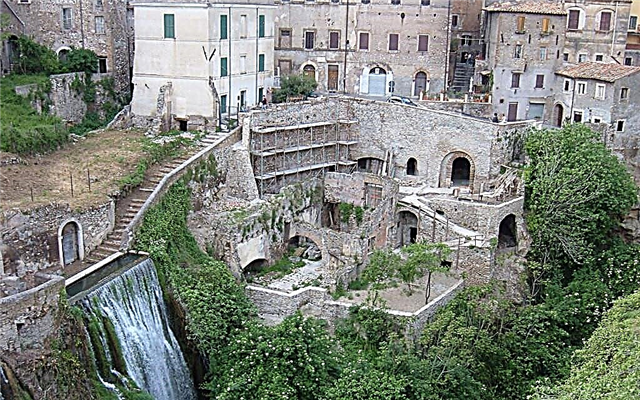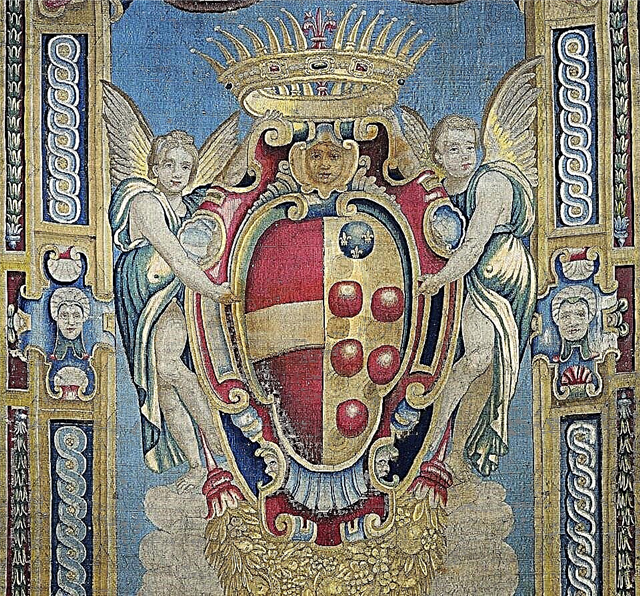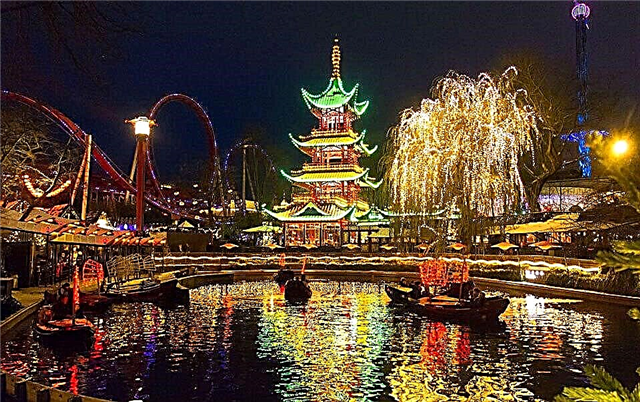Address: Russia, St. Petersburg, Karpovka River Embankment, 45
Foundation date: 1900 year
Main attractions: a temple in honor of the Twelve Apostles, a temple-chapel of the Intercession of the Mother of God, a temple in the name of St. John of Rylsky, a temple-burial vault of St. John of Kronstadt
Shrines: the relics of the holy righteous John of Kronstadt, the tomb of the schema-abomination of Angelina, the icon of the Savior with a particle of the Lord's robe, the crucifix with a particle of the Life-giving Cross of the Lord, the icon of the Protection of the Mother of God
Coordinates: 59 ° 58'15.1 "N 30 ° 18'00.8" E
Object of cultural heritage of the peoples of the Russian Federation of regional significance
Content:
A beautiful monastery on the banks of a small tributary of the Neva appeared thanks to the Russian ascetic and enlightener - John of Kronstadt. The Orthodox monastery has experienced more than half a century of desolation and oblivion. Many priests, nuns, and nuns suffered for their faith. Today, the magnificent architectural ensemble in the Petrogradsky district has been restored and is open to believers and tourists.

Ioannovsky monastery from a bird's eye view
History of the monastery
In 1900, the merchant Simeon Ramensky donated a plot of land near the Karpovka River to Father John so that a new Orthodox monastery would appear in the capital of the Russian Empire. It was decided to dedicate the monastery to the Bulgarian Saint John of Rila, who lived in the 10th century.
The detailed design of the monastery buildings was prepared by the St. Petersburg architect Nikolai Nikitich Nikonov. After the architectural project was approved by Emperor Nicholas II, Father John began construction. City officials and the Bishop of Yamburg Boris (Plotnikov) took part in the ceremonial laying of the buildings.
At first, the new nunnery was listed as a courtyard of the Sursk Ioanno-Theological monastery. Thanks to the enormous authority of Fr. John and the love of believers for him, help came from different directions. Donors contributed the necessary money, and contractors quickly resolved all emerging issues.

General view of the Ioannovsky monastery
The construction of the monastery proceeded quickly. In 1901, the first church appeared on the ground floor of the main building, and the huge building was completed in just 3 years. The new Orthodox monastery turned out to be so large that in 1902 it was given the status of a first-class monastery.
The magnificent Cathedral of the Twelve Apostles had two aisles. A high bell tower adjoined the building from the west, and five massive domes towered over the temple.
Even during the life of Father John, the monastery was quite prosperous and independently provided itself with everything necessary. Before the revolution, more than 350 nuns lived there. The monastery had icon painting, sewing and gold sewing workshops. There was a prosphora room and two ovens on the territory, where more than 1000 prosphora were baked at a time.

Church of the Twelve Apostles of the Ioannovsky Monastery
There is a vegetable garden to the east of the monastery, and an orchard to the west. The plots of land were small, but the sisters worked hard and took a good harvest from their subsidiary farm every year. When the First World War began, a small infirmary was opened in the monastery, where the nuns helped restore the health of soldiers wounded in battle.
In 1908, at the age of 80, Father John died. According to the will of the respected priest, he was buried in the tomb, which he made for himself in the crypt of the John monastery. The white marble tomb of Father John immediately turned into a place of pilgrimage, and thousands of believers came here at any time of the year.
After the change of government, the attitude of the state towards the church changed. In 1919, a labor commune was placed in the monastery. Four years later, the monastery was liquidated, the nuns were sent into exile, and the buildings were distributed to various organizations. Part of the buildings went to the technical school for land reclamation.

Some churches were demolished as unnecessary. During the years of the struggle between the state and religion, the beautiful hipped-roof chapel of St. John of Rylsky, which stood on the banks of the river, was lost. By the decision of the authorities of Leningrad, in one of the monastery refectories, the house church of St. Nicholas the Wonderworker was demolished.
Despite the fact that the monastery no longer existed, believers continued to come to the crypt, where the relics of Father John lay. To deprive them of the opportunity to pray near the revered shrine, in 1926 the entrance to the basement was walled up with bricks. During the Great Patriotic War, the premises were opened, and a bomb shelter was made inside the former crypt. Here the inhabitants of Leningrad escaped during the German air raids on the city.
The time of oblivion and destruction dragged on for over 60 years, until the old monastery was finally returned to the diocese. In 1989, the monastery was a miserable sight. More than 20 outside organizations were located on its territory. The internal structure of the premises was destroyed or altered, and the buildings were in need of repair.

Monastery domes
Despite the loss and desolation, so many residents of the city came to the first service that the temple could not accommodate everyone. The church service had to be broadcast on the street through speakers.
At first, the monastery had the status of a courtyard of the Pyukhtinskaya Assumption monastery. It took several years for all the organizations that occupied the church buildings to leave its territory. The restoration of the entire complex of buildings took many years. Churches, cells and outbuildings were restored in stages according to preserved drawings and individual photographs.
Temples
The spectacular architectural cloister of the monastery is considered one of the most beautiful cathedrals and churches in St. Petersburg. The central place in it is occupied by the Temple of the Twelve Apostles - a large church in the neo-Byzantine style, built at the beginning of the last century from two-tone bricks.

Monastery gate
The five-domed church with a belfry is located on the two upper floors of the monastery complex. After restoration in 1991, two chapels were consecrated in it. Beautiful facades are decorated with intricate brick patterns and large icons. Massive helmet-shaped domes and gilded crosses of the main monastery cathedral are visible from different parts of the Petrograd side and from the Karpovka valley.
On the first floor of the building there is a one-altar church of St. John of Rylsky. Its walls and vaults are decorated with paintings on religious subjects and picturesque ornaments, and the floor is made of two-tone stone tiles.
In the basement there is a tomb with the relics of Father John. Historically, this temple was consecrated in honor of the Prophet Elijah and Queen Theodora - the heavenly patrons of the parents of the righteous. The body of the saint lies in a white marble sarcophagus, which is marked with a cross and large letters "I" and "K".

Chapel of the Intercession of the Most Holy Theotokos
Behind it you can see a single-tier carved wooden iconostasis. Icons and a life story of the saint hang on the walls. The floor is covered with soft carpets that muffle the noise of voices and footsteps. Soft light reigns under the low vaults, and there are always many colors.
At the corner of the stone fence of the monastery there is a small but very graceful Pokrovskaya chapel. A small wooden church on a stone foundation was built in 1910 according to the project of N.N. Nikonov. In the 1920s, it was closed and converted into a transformer box, and then completely demolished.
For the 100th anniversary of the monastery, in 1999-2000, the neo-Byzantine chapel was rebuilt according to the project prepared by the architect A.P. Viktorov. The one-domed temple on a high base is in perfect harmony with the main building of the monastery and fits perfectly into a single architectural ensemble.

Temple-burial vault of St. John of Kronstadt
Useful information for tourists
The territory of the monastery is open to everyone on any day from 8:00 to 19:30. The entrance is free. It is customary to leave donations at the monastery. Guests are asked not to take photos of the inside of the temples and photos of the nuns.
Services are held on weekdays at 8:20 and 17:00, and on Sundays at 9:00 and 17:00. For pilgrims, the temple-tomb of Father John is opened after the morning service at 10: 30-11.20 and closed at 15: 30-16: 45. Patronal feasts in the monastery are celebrated several times a year - on January 2, June 14, July 13, August 31, September 30, October 14 and November 1.
The main shrines of the monastery are considered the tomb and vestments of Father John, a particle of the robe, belt and veil of the Mother of God. In addition, believers come to the tomb of the first abbess of the schema-abbess Angelina, the crucifixion with a particle of the Life-giving Cross of the Lord, particles of the relics of the holy apostles and the icon of the Protection of the Theotokos.

Lower Church of St. John of Rila
There is a Sunday school at the St. Petersburg monastery, which is attended by children and adults. In the village of Vartemyagi, 37 km from the city, a courtyard was opened under the supervision of nuns.
How to get there
The monastery is located in the Petrogradsky district of the city, on Karpovka embankment, 45. Near the monastery - on Professor Popov Street and in Vyazemsky Lane, buses No. 25, 25A and tram No. 40 stop. Chkalovskaya "and" Black River ".











